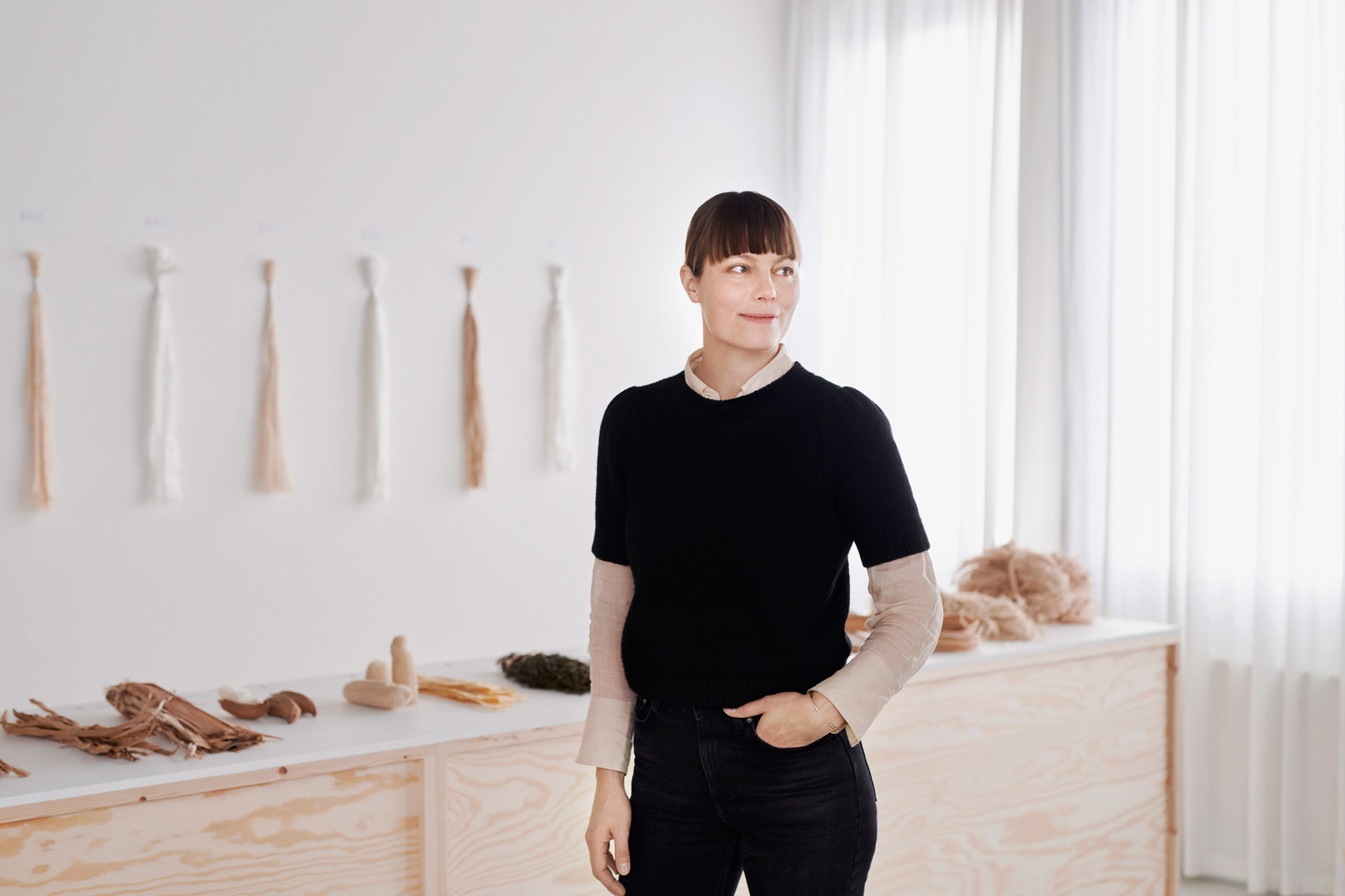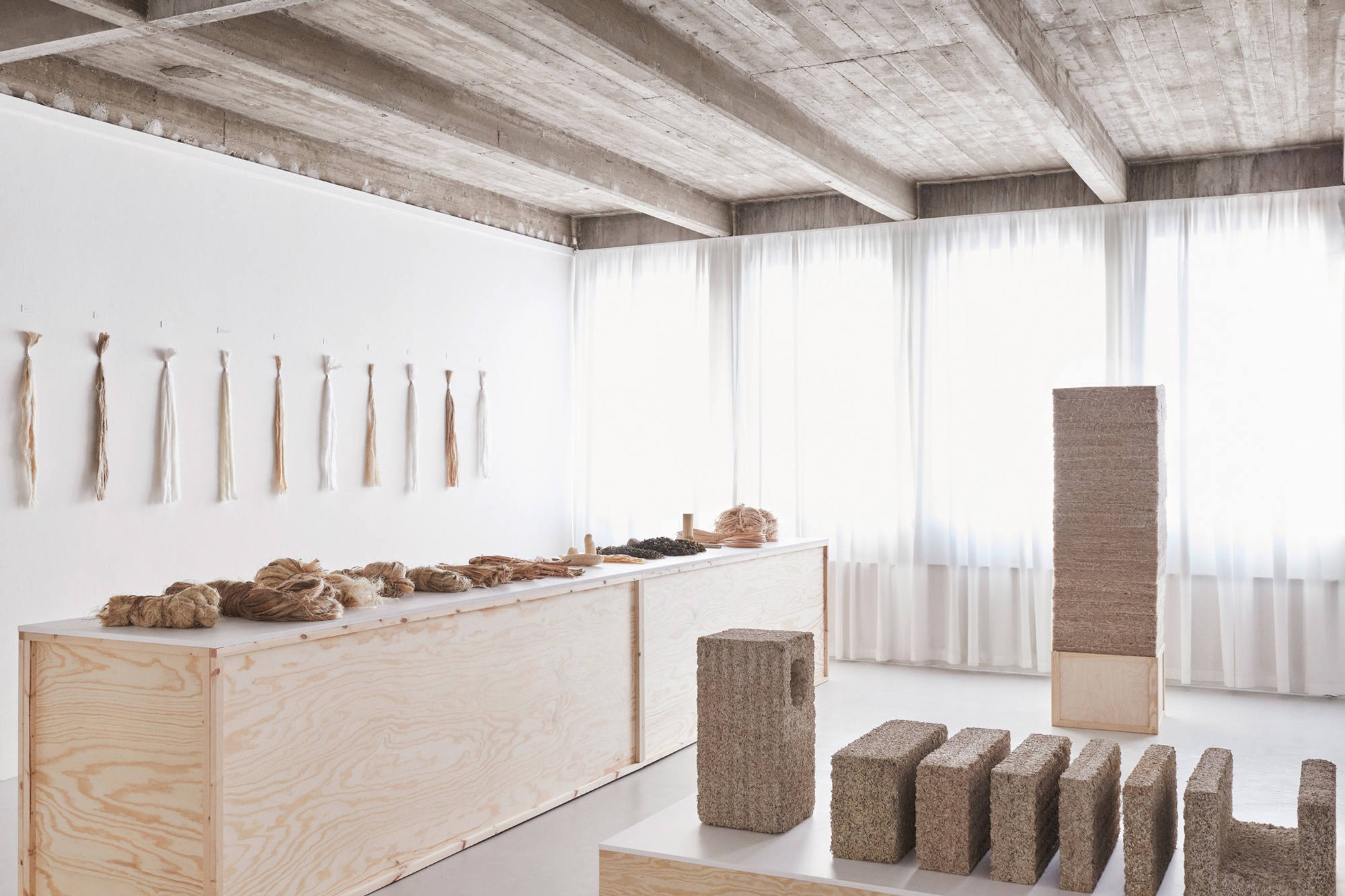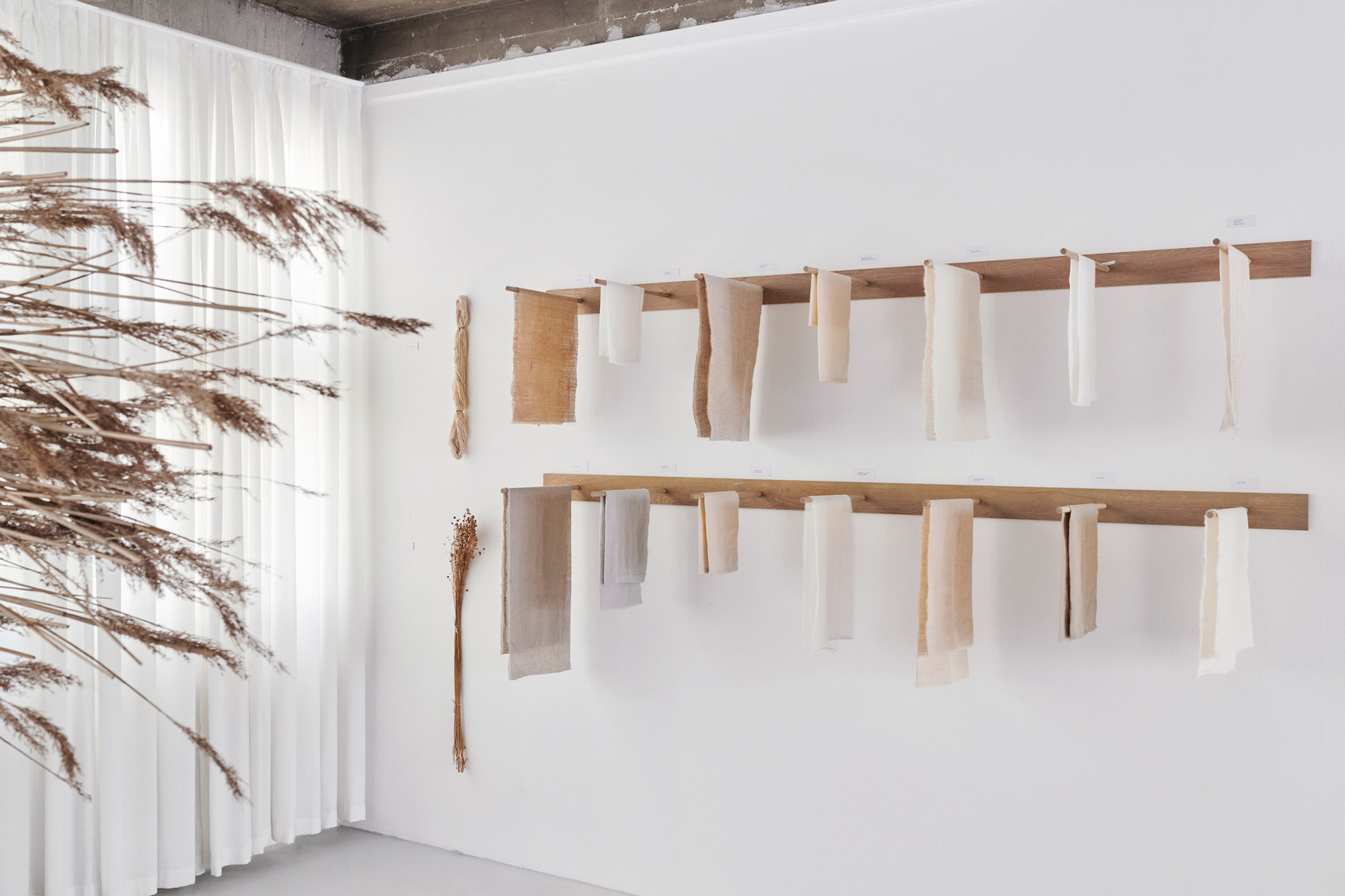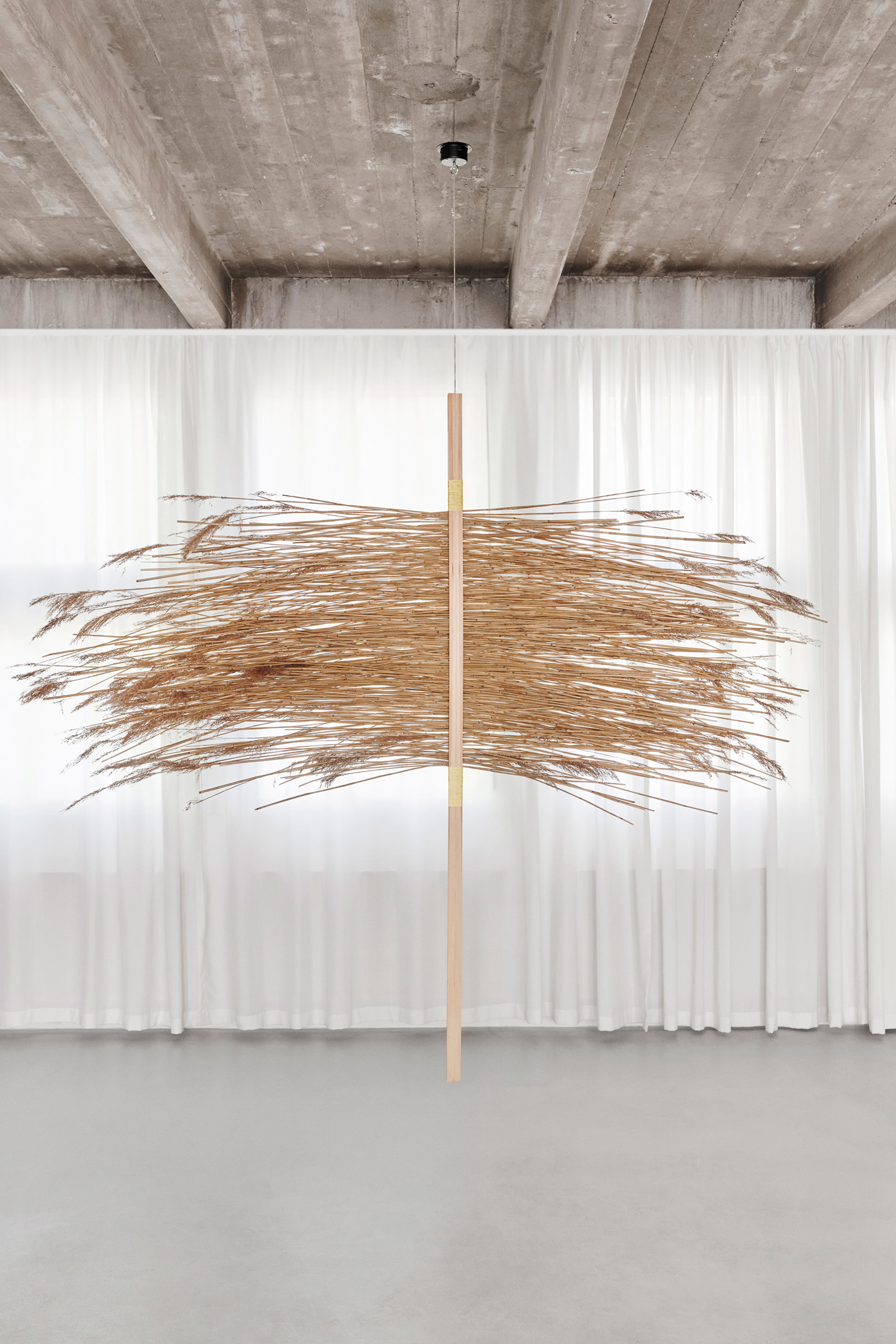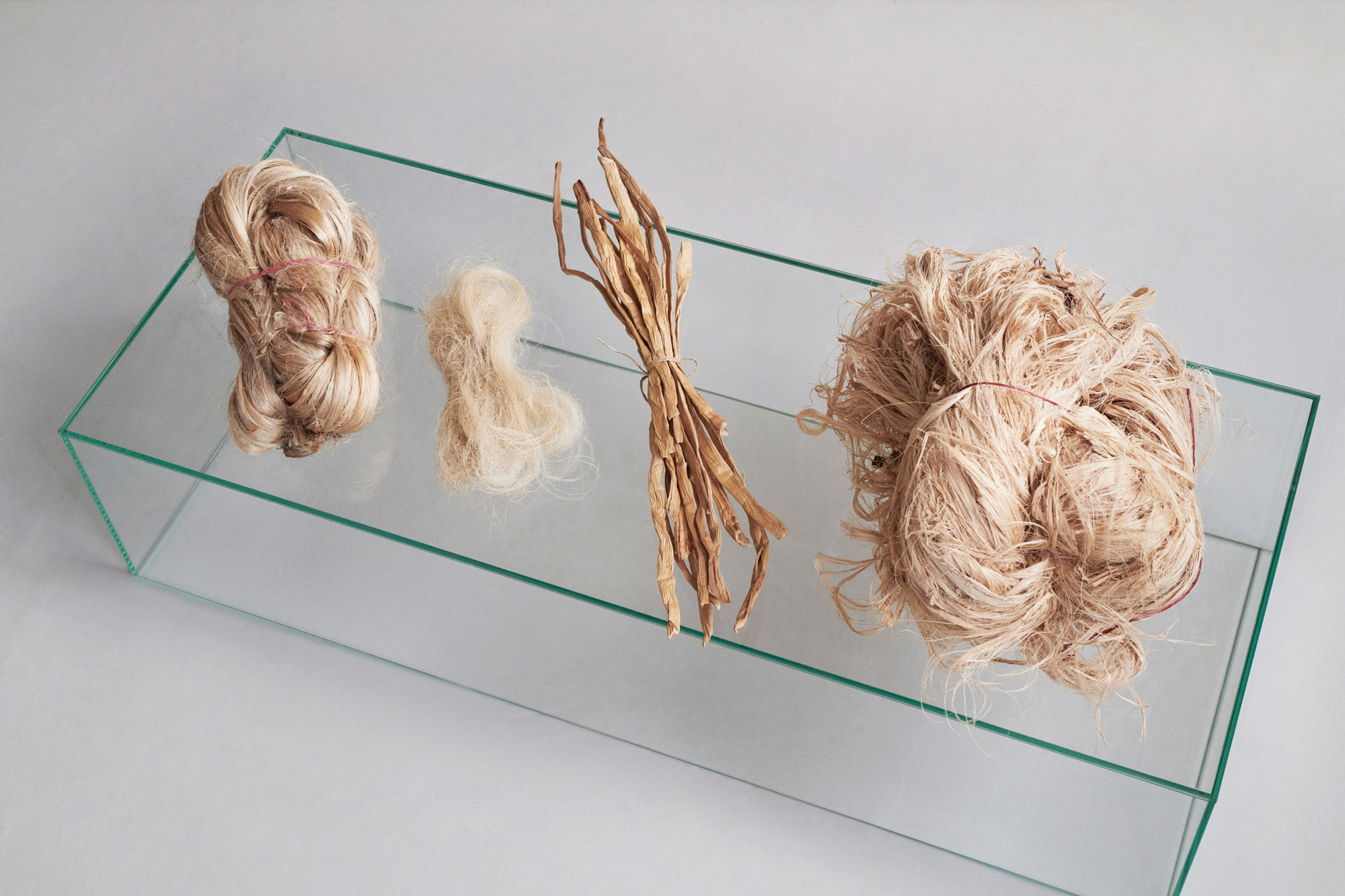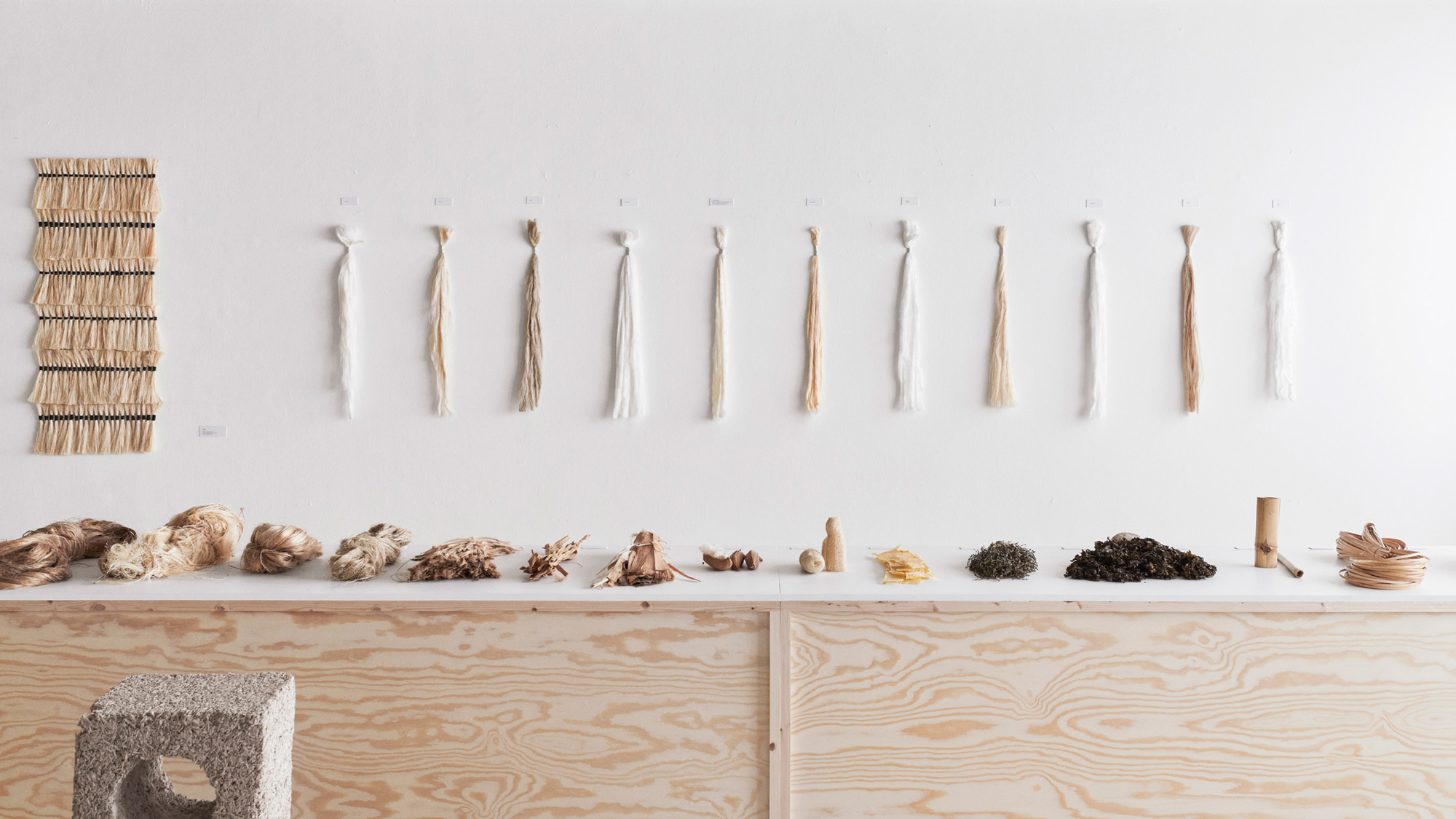An exhibition that showcases the potential of natural fibers in product design and architecture projects.
In recent years, more and more designers and manufacturers have started to use eco-friendly materials to make sustainable furniture and objects, but the availability of plant fibers is still low. Danish designer Sara Martinsen discovered this while researching materials for her furniture designs. In her one-year exploration of the potential of these natural fibers as functional and aesthetic materials, the designer also discovered an array of plants previously never used in sustainable product design or architecture. The Phytophilia exhibition at the Bygning A, gallery in the A Petersen furniture showroom in Copenhagen introduces visitors to a material library that is as fascinating as it is inspiring.
“We are raised and educated to believe in the importance of leaving a mark. When in fact we need to leave zero and nothing. This is where the plant fibers become relevant. They can vanish and degrade,” explains Sara Martinsen. In her words, the exhibition offers “a chance to experience the raw plant fibers up close, to see, smell, feel and observe. We need to stimulate our sense of responsibility, our critical sense and our senses in general.”
The show highlights 20 different plant fibers in both raw and processed states. Among the more well-known bamboo, hemp, sisal, flax, and rattan, visitors can also admire fibers of pineapple, water hyacinth, banana, corn, red, and cactus. The show features bundles of fibers as well as fabric samples and completed products. A sculpture is also included. Not all the materials in the exhibition suit product and furniture design or the textile industry; some can strengthen bricks or act as natural insulation. More than just natural, renewable, and incredibly versatile materials, these plant fibers are also biodegradable. The Phytophilia show opened on October 22 and ends on December 12, 2020. Photographs© Kristian Holm.


